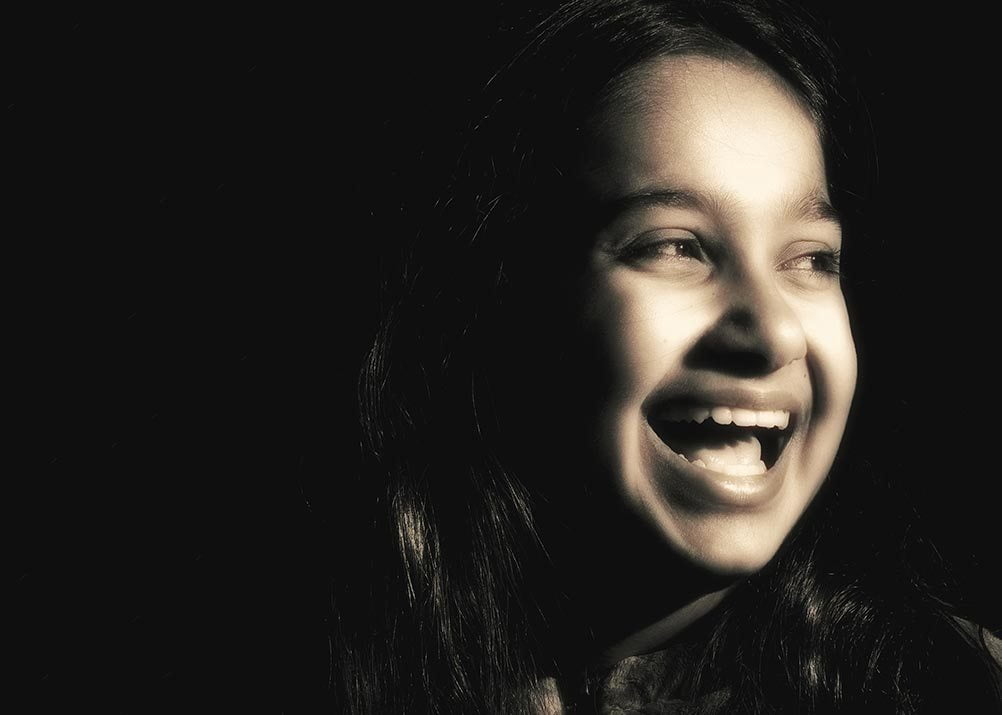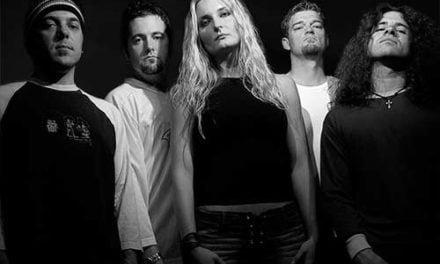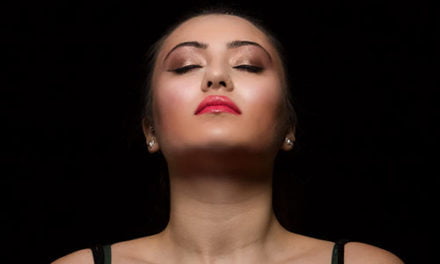Here is one of my first shots with my upgraded 5D, the Canon EOS 5D Mark III. (What in INCREDIBLE piece of engineering! – Infinitely improved 61-point autofocus system, much better exposure evaluation, usability through the roof, and more!)
Paress was happy to model for some test shots on a new technique I learned from Scott Kelby, through one of his “Recipe” books.
The idea is to darken the background even on a sunny day.
All we need to do is severely underexpose the background and then light the subject with a flash at full power.
My Canon flashlight 580EX II was on a tripod, 45 degrees from Paress, and a bit higher. The flash was diffused for a softer light.
I had Paress positioned towards me but I asked her to turn her head toward the general area of the flash light, and look straight. Wasn’t too hard to make her laugh!
The trick here is to use remote triggers. I used to use a dual flash system, with the 580EX II taking care of RF triggering, but I was never happy with the results: Simply, unreliable!
Now, I use a pair of PocketWizard PluxX Transeivers, one mounted on my camera’s hotshoe and the other on the flash. I do loose TTL flash metering, but with flash I find it more reliable to simply dial-in the amount of light I need.
I used the amazing Canon EF 70-200mm f/2.8L IS USM, stopped-down at f18.0 with a shutter speed of 1/200, and the flash at full power. It took a bit of trial and error:
- Set the camera to “manual”.
- Set the shutter speed to 1/125 or so, (lower than 1/250 or flash synching problems begin) and a small aperture (say f22) at ISO 100 (for a “clean” shot). Use the camera’s meter to find the properly exposed combo and then underexpose by 2 stops. Fire a test shot without the flash.
- Vary shutter speed and aperture until the background is black and the face is barely visible.
- Now turn on the flash and fire away! The background, which is lit by shutter speed and aperture will be black. Vary the intensity of the flash until you have the light you want on the subject.
I settled at f18.0 and 1/200 shutter speed, ISO 100, and the flash at full power. With such a small aperture the full power was a must.
POST PROCESSING:
My usual portrait workflow in Camera Raw (removed blemishes, adjusted highlights and shadows, etc.) and then I used a variety of filters from Silver Efex Pro and Color Efex Pro (all from the Google Nik Collection) to get to the mono sepia toning and softness that this frame desired.


















RECENT COMMENTS